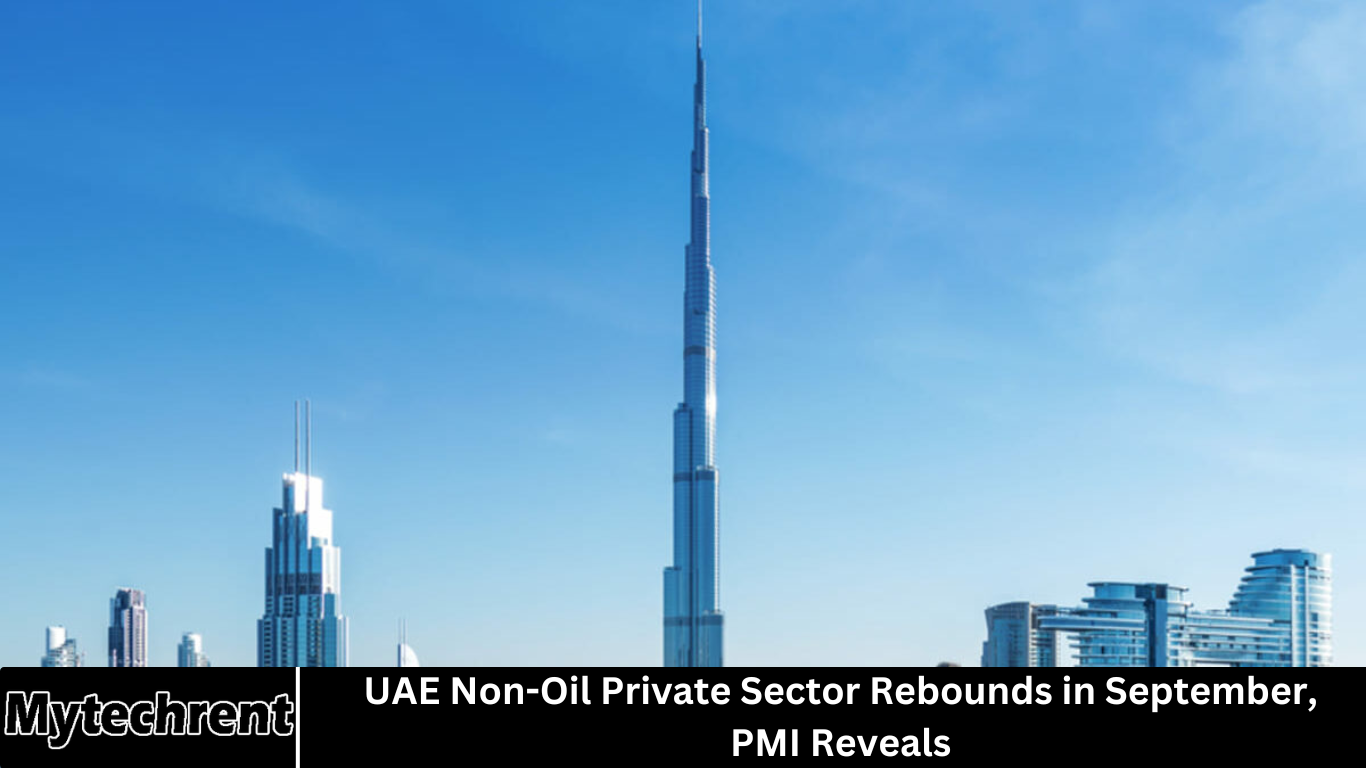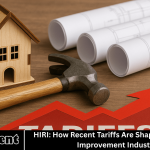The United Arab Emirates’ non-oil private sector witnessed a notable rebound in September, according to the latest data from the S&P Global Purchasing Managers’ Index (PMI).
- What is the PMI and Why Does It Matter?
- September PMI Signals Renewed Growth in Non-Oil Economy
- UAE’s Economic Diversification Strategy Paying Off
- Sectoral Analysis: Where the Growth is Happening
- 1. Retail and Wholesale Trade
- 2. Tourism and Hospitality
- 3. Construction and Real Estate
- 4. Financial and Business Services
- What Businesses Are Saying
- UAE Non-Oil Growth in a Global Context
- Challenges and Risks to Watch
- Expert Commentary
- Dr. Aisha Al Mansoori, UAE-based Economist:
- James Swanston, Middle East Economist at Capital Economics:
- Future Outlook: What to Expect in Q4 2025
- Frequently Asked Question
- What is the UAE Non-Oil PMI and why is it important?
- What does the September 2025 PMI report reveal about the UAE economy?
- Which sectors contributed most to the UAE’s non-oil growth in September?
- How does the UAE PMI compare to other countries in the region?
- Is the UAE economy still dependent on oil?
- What are the challenges facing the UAE non-oil sector despite the rebound?
- What can we expect for the UAE non-oil sector in Q4 2025?
- Conclusion
This positive shift signals renewed momentum in the country’s economic diversification efforts, underscoring the UAE’s resilience in the face of global uncertainties.
With strong output growth, rising new orders, and an uptick in business confidence, the PMI for September offers promising indicators for the UAE’s economic trajectory going into the final quarter of the year.
More Read: Merck Cancels £1bn Expansion, Delivering Setback to UK Pharma Sector
What is the PMI and Why Does It Matter?
The Purchasing Managers’ Index (PMI) is a widely recognized economic indicator used to gauge the health of a country’s manufacturing and services sectors. A PMI score above 50 suggests expansion, while below 50 signals contraction.
For the UAE, a non-oil PMI reading above 50 is especially significant. As the country continues to reduce its reliance on hydrocarbons, a thriving non-oil private sector reflects progress toward the UAE Vision 2030 goals of economic diversification and sustainable growth.
September PMI Signals Renewed Growth in Non-Oil Economy
According to the S&P Global report, the UAE’s seasonally adjusted PMI rose to 56.7 in September, up from 55.0 in August. This marks one of the strongest readings this year and demonstrates clear improvement in business activity across key non-oil sectors.
Key Highlights from the September PMI Report:
-
Output: Business activity surged, driven by higher demand and increased marketing efforts.
-
New Orders: New business inflows saw their sharpest rise in three months.
-
Employment: Firms continued hiring, although job growth remained modest.
-
Input Costs: Input price inflation was mild, helping businesses maintain profitability.
-
Business Confidence: Optimism rose to a four-month high, with firms expecting continued growth over the next 12 months.
These results indicate a robust rebound in business confidence and operational activity, particularly in sectors such as retail, hospitality, construction, and financial services.
UAE’s Economic Diversification Strategy Paying Off
The UAE has long recognized the need to diversify away from oil dependency. With significant investments in sectors like tourism, real estate, logistics, fintech, and renewable energy, the country has positioned itself as a leading hub for innovation and business in the Middle East.
The strong PMI performance in September serves as a validation of these long-term efforts.
Initiatives Driving Non-Oil Growth:
-
Dubai Economic Agenda (D33) – Aims to double the size of Dubai’s economy by 2033 and position it among the top three global cities for business.
-
Abu Dhabi Industrial Strategy – Investing billions to enhance the emirate’s industrial capabilities and attract FDI.
-
UAE Golden Visa and Business Reforms – Attracting skilled talent and entrepreneurs to fuel private sector growth.
-
COP28 and Green Economy Initiatives – Boosting investments in clean energy and sustainable industries.
These efforts collectively create a favorable ecosystem for private enterprises, SMEs, and global investors looking to establish operations in the UAE.
Sectoral Analysis: Where the Growth is Happening
1. Retail and Wholesale Trade
September witnessed a surge in consumer demand, with many retailers reporting increased footfall and online sales. E-commerce platforms also saw growth due to seasonal promotions and back-to-school campaigns.
2. Tourism and Hospitality
With the high season approaching and international events like GITEX Global 2025 and major trade expos, hotel bookings, airline traffic, and leisure services saw a marked improvement.
3. Construction and Real Estate
Mega projects such as the Dubai Urban Master Plan 2040 and Abu Dhabi’s Midfield Terminal continue to fuel demand for construction services. The real estate sector, buoyed by investor-friendly policies, reported rising demand for both residential and commercial units.
4. Financial and Business Services
Banking, fintech, and professional services recorded solid growth, driven by increasing demand for financing, consulting, and digital transformation services.
What Businesses Are Saying
The S&P Global report also includes sentiment from business owners and purchasing managers:
“We’ve seen a notable pickup in customer inquiries and project orders this month. Market sentiment is improving, and we are optimistic about Q4,” said a manager at a Dubai-based construction firm.
“Our sales jumped significantly compared to August. We are even planning to increase staff if this trend continues,” added a retail executive from Abu Dhabi.
This optimism is reflected in firms ramping up inventory levels and increasing supplier orders to meet expected demand in the coming months.
UAE Non-Oil Growth in a Global Context
While global economies remain under pressure from high interest rates, inflation, and geopolitical tensions, the UAE’s non-oil sector appears resilient.
The country’s strategic location, pro-business policies, and stability continue to make it an attractive destination for trade, investment, and innovation.
Regional Comparisons:
-
Saudi Arabia: Also reported growth in non-oil activity, but at a slightly slower pace compared to the UAE.
-
Qatar: Growth continues but remains below pre-World Cup levels.
-
Egypt: Struggling with inflation and currency devaluation, impacting business confidence.
The UAE stands out in the region for maintaining a balanced approach between growth, stability, and diversification.
Challenges and Risks to Watch
Despite the strong performance, there are challenges that could impact future PMI readings:
-
Global Economic Slowdown – Slower demand in Europe and Asia could affect trade and exports.
-
Interest Rate Environment – High global interest rates might limit credit growth and investments.
-
Geopolitical Tensions – Ongoing conflicts or supply chain disruptions in key markets can ripple into the UAE.
-
Inflationary Pressures – Although currently contained, any surge in input costs could affect profit margins.
Policymakers and business leaders will need to navigate these uncertainties while maintaining momentum in the non-oil economy.
Expert Commentary
Dr. Aisha Al Mansoori, UAE-based Economist:
“The rebound in September’s PMI shows that the UAE economy is not just recovering, but evolving. We’re seeing a shift from oil reliance to a more dynamic, service-driven economy. It’s encouraging, but consistency will be key.”
James Swanston, Middle East Economist at Capital Economics:
“The UAE’s non-oil PMI has remained in positive territory for several months now. The September uptick adds to the case for strong full-year GDP growth in the non-oil sectors.”
Future Outlook: What to Expect in Q4 2025
With major international events, a strong tourist season, and continued investment flows, the final quarter of 2025 could maintain or even exceed the positive momentum recorded in September.
Positive Drivers:
-
Expo City Dubai and other trade fairs attracting global visitors
-
Infrastructure spending from both federal and emirate-level governments
-
Increased regional trade through digital corridors and logistics partnerships
Key Metrics to Watch:
-
Next PMI releases for October and November
-
Central Bank of the UAE’s economic projections
-
Year-end corporate earnings across key sectors
If current trends hold, the UAE is well on track to post strong non-oil GDP growth for the full year, solidifying its role as a regional leader in post-pandemic economic recovery.
Frequently Asked Question
What is the UAE Non-Oil PMI and why is it important?
The UAE Non-Oil Purchasing Managers’ Index (PMI) is a key economic indicator that measures the health of the non-oil private sector. A PMI score above 50 indicates expansion, while below 50 signals contraction. It’s important because it reflects the strength of sectors like retail, tourism, construction, and services—areas crucial to the UAE’s diversification strategy away from oil dependence.
What does the September 2025 PMI report reveal about the UAE economy?
The September 2025 PMI rose to 56.7, indicating a strong rebound in non-oil business activity. This growth was driven by higher output, increased new orders, and improved business confidence across key industries. It suggests that the UAE’s non-oil economy is gaining momentum heading into the final quarter of the year.
Which sectors contributed most to the UAE’s non-oil growth in September?
Key contributors included:
- Retail and e-commerce
- Tourism and hospitality
- Construction and real estate
- Financial and professional services
These sectors saw increased demand, higher customer activity, and greater investment, all of which boosted business performance in September.
How does the UAE PMI compare to other countries in the region?
The UAE consistently posts one of the highest PMI readings in the Middle East. In September, its non-oil PMI outperformed those of Saudi Arabia, Qatar, and Egypt, highlighting the UAE’s strong post-pandemic recovery, diversified economy, and investor-friendly policies.
Is the UAE economy still dependent on oil?
While oil remains an important part of the UAE’s GDP, the country has made significant progress in diversifying its economy. The non-oil sector now contributes a substantial portion of national output, supported by initiatives like UAE Vision 2030, Dubai’s D33 Agenda, and green energy investments.
What are the challenges facing the UAE non-oil sector despite the rebound?
Despite September’s positive data, challenges remain, including:
- Global economic slowdown
- High interest rates affecting borrowing and investment
- Potential supply chain disruptions
- Geopolitical risks in surrounding regions
Businesses and policymakers will need to stay agile to maintain momentum.
What can we expect for the UAE non-oil sector in Q4 2025?
With seasonal tourism, major trade events, and continued public-private investment, Q4 2025 is expected to maintain or exceed current growth levels. Sectors like tourism, logistics, and real estate are likely to see strong performance, keeping business sentiment positive and PMI scores elevated.
Conclusion
The UAE’s non-oil private sector rebound in September, as revealed by the latest PMI data, paints an encouraging picture of the country’s economic health.
With strategic reforms, a business-friendly environment, and strong government support, the UAE continues to make impressive strides toward a diversified, sustainable, and globally competitive economy.








